Red List Protects Cambodian Antiquities
Phnom Penh, Cambodia – In a major step to protect irreplaceable cultural heritage, Cambodia’s Red List protects Cambodian antiquities. On February 9, 2010, the National Museum of Cambodia introduced the Red List of Cambodian Antiquities at Risk.
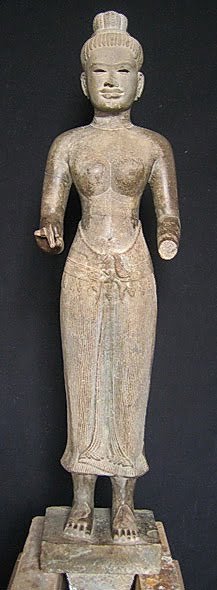
Cambodia’s Secretary of State, Ministry of Culture and Fine Arts, H.E. Chuch Phoeurn, a trained archeologist himself, introduced the program with the following remarks:
“It is a great honor and pleasure for me to welcome your Excellencies, Lok Chumteav, Honored Guests and Colleagues, Ladies and Gentlemen to the launch of the Red List of Cambodian Antiquities at Risk and I thank you for your presence here on the joint invitation of the Ministry of Culture and Fine Arts and the International Council of Museums (ICOM).
“Today is an important event for Cambodia to launch the Red List of Cambodian Antiquities at Risk, which is an addition to ICOM’s series of Red Lists focusing on preventing pillage, theft and the illegal export of cultural property. The Cambodian Red List describes and illustrates various categories of objects dating from the prehistoric and Angkor periods to the 19th century, which are targets of looting and illicit trafficking. It is especially designed to assist cultural institutions, police and customs, and other relevant organizations in identifying and locating objects that may have been looted and illicitly exported from Cambodia.
“On this special occasion, on behalf of the Ministry of Culture and Fine Arts, I wish to express my profound gratitude to ICOM as well as all national and international experts, who assisted in publishing this Red List and to the U.S. Department of State for sponsoring its publication.
“Taking this opportunity, I wish to mention an important earlier project that was prepared in collaboration with the EFEO; ICOM’s 1993 publication, One Hundred Missing Objects: Looting in Angkor, which was updated in 1997. This book has proved an effective tool in providing information on stolen Khmer artifacts in order that, once rediscovered, they may be returned. As a concrete result of the book, and through the great efforts of the Royal Government of Cambodia, UNESCO, ICOM, EFEO and other organizations as well as individuals, ten Khmer artifacts have so far been repatriated to Cambodia. Still more objects are currently under investigation.
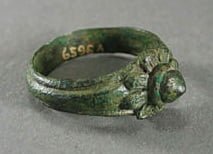
“For more than two millennia, especially during the golden age of Angkor from the ninth through the fifteenth century, Cambodia enjoyed a brilliant epoch of creativity and artistic accomplishments that left a legacy of innumerable temples and sculptures, which are now testament to our kingdom’s rich cultural heritage. These cultural resources are fundamental to our people’s integrity and identity. Moreover, they enormously contribute to the country’s economic benefits.
“Unfortunately, during the civil war in the 1970s, followed by decades of unrest, cultural heritage has been at seriously threatened. One of the most serious problems faced by Cambodia is looting and illicit trafficking of ancient artifacts. Trafficking flourished during the last thirty years and the problem remains to this day. Damage caused by war was immense, but illicit trafficking and illegal excavation of sacred deposits containing valuable objects at various temples and sites continue to be a major concern. Sculpture, architectural elements, bronzes, iron artefacts, wooden objects and ceramics are still being illegally exported and looters have exploited the vulnerability of the country’s heritage.
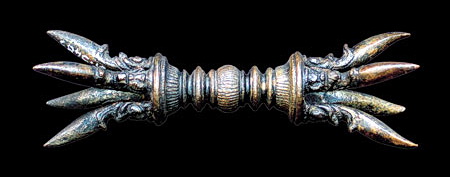
“In response to these problems, the Royal Government of Cambodia has made considerable progress in defining cultural heritage priorities, establishing legal measures and implementing strategies to address them. With respect to the UNESCO conventions and UNIDROIT, and building on the existing law for the protection of cultural heritage, Cambodia has increased the efficacy of national legislation by establishing a sub-decree on the implementation of the protection of cultural heritage. Other concrete actions include entering into various bilateral agreements requesting countries impose strict import restrictions on cultural property and take appropriate action against illegal export.
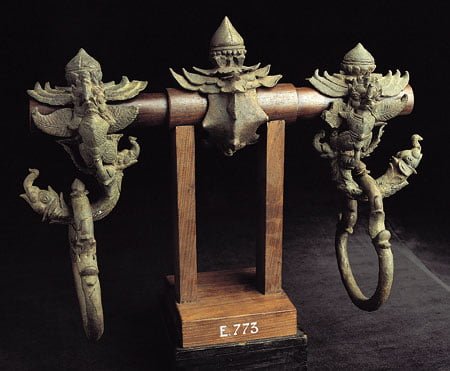
“There is also the need for concerted international efforts to develop greater collaboration in combating illicit trafficking and cross-border smuggling of movable cultural property and returning it to the country of origin. In this context, I believe that the Red List will play an important tool in providing information on Cambodian antiquities at risk and ensure appropriate actions to safeguard them.
“In conclusion, I wish to thank all national and international organizations as well as individuals, who contribute to the cause of protecting and preserving Cambodian cultural heritage and who have returned Khmer antiquities to Cambodia. This gesture of support and close cooperation is highly valued and appreciated by the people of Cambodia.
“May the soul of Khmer ancient artifacts bless you all continued happiness, prosperity and success.”
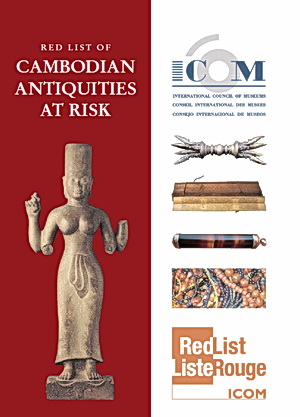
–
–
Download a PDF of the Red List of Cambodian Antiquities at Risk here.
In addition to government organizations many privately funded foundations work to prevent antiquities theft including:
–
–
–
–
–
